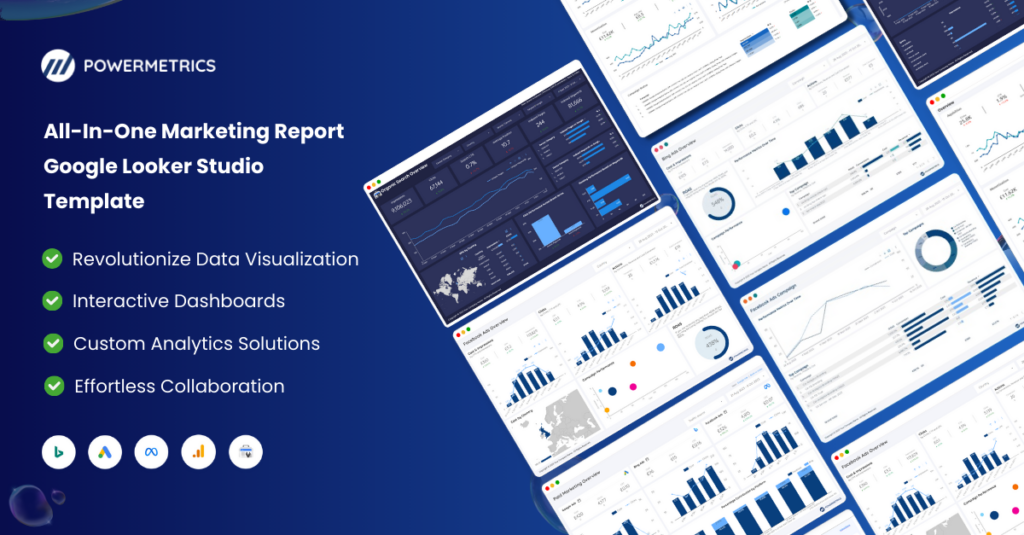
Understanding the challenges of cross-platform reporting integration
In the ever-evolving digital marketing landscape, marketers confront the intricate challenge of consolidating data from diverse pay-per-click (PPC) platforms to gain a comprehensive view of their marketing endeavors. This integration is paramount for understanding marketing spend, ROI, and key performance indicators (KPIs) such as CPC, CPA, CTR, and CPM. However, the task of integration presents several hurdles for marketers.
One of the core challenges lies in the fragmentation of data across PPC platforms like Google Ads, Bing Ads, and Facebook Ads, each with its own set of metrics and conversion conventions. This diversity complicates the harmonization of data streams, making it daunting to consolidate information and attain a unified view of marketing performance.
Furthermore, integrating data from web analytics sources such as Google Analytics 4 (GA4) and Google Search Console adds another layer of complexity. A centralized system for data aggregation and analysis becomes essential for marketers to accurately assess campaign effectiveness and make informed decisions.
Connecting PPC platforms with funnel.io for cross-platform reporting
Streamlining cross-platform reporting integration is made effortless with Funnel.io’s free tier, offering 350 flex points for connecting various ad sources, including Google Ads, Facebook Ads, and Bing Ads. Getting started is simple: after creating an account, marketers can swiftly connect their ad accounts from each platform, granting necessary permissions. Once connected, Funnel.io seamlessly retrieves key dimensions and metrics from each platform, such as ad spend, impressions, clicks, and conversions.
Beyond standard metrics, Funnel.io offers the flexibility to customize dimensions and metrics to suit specific reporting needs. Marketers can define custom dimensions based on campaign objectives, audience segments, or ad variations, enabling a more nuanced analysis of marketing performance across platforms.
Upon configuring desired dimensions and metrics, marketers can effortlessly export data from Funnel.io to Google Looker Data Studio for further analysis and visualization. This seamless data connection empowers marketers to create dynamic dashboards and reports, providing insights into cross-platform marketing performance. Leveraging Funnel.io’s free tier and 350 flex points, marketers can achieve seamless cross-platform reporting integration without incurring additional costs. Additionally, Funnel.io acts as a data warehouse, facilitating faster reporting and enhancing efficiency in data analysis.
* Watch our YouTube video to learn how to connect , create custom dimensions and metrics and data shares in funnel.io.
Integrating GA4 and Google Search Console with Looker Studio
To complement PPC data, marketers can enrich their reporting by integrating GA4 and Google Search Console data directly into Looker Studio. With native connectors for GA4 and Google Search Console, Looker simplifies data integration and offers insights into website performance and search visibility. Once authenticated, marketers can explore various dimensions and metrics, configuring custom reports and dashboards to suit specific analytical needs.
Combining data from PPC platforms with insights from GA4 and Google Search Console enables marketers to create comprehensive cross-platform reports, identify trends, and optimize strategies.
* Explore our YouTube tutorial, where we demonstrate how to seamlessly connect Google Analytics 4 (GA4) and Google Search Console within Looker Studio.
Creating interactive unified Looker Studio PPC dashboards
Marketers can streamline the creation of interactive unified PPC dashboards by connecting Funnel as the central data source. Consolidating data from Google Ads, Facebook Ads, and Bing Ads within Funnel simplifies reporting, allowing marketers to access a unified dataset.
Looker Studio’s robust visualization tools enable the creation of dynamic dashboards, offering insights into ad spend, impressions, clicks, conversions, and more. Drill-down capabilities allow for deeper analysis by dimensions such as campaign, ad group, and audience segment.
Crafting interactive unified Looker Studio web analytics dashboards
Linking GA4 and Google Search Console as primary data sources within Looker Studio empowers marketers to design dynamic web analytics dashboards. Looker’s visualization tools facilitate the depiction of key metrics such as website traffic, bounce rate, and top-performing keywords. Drill-down capabilities enable exploration by dimensions like traffic sources and geographic locations, providing deeper insights into user behavior.
Conclusion
Integrating data sources and constructing interactive dashboards play pivotal roles in digital marketing success. Throughout this article, we’ve delved into the challenges marketers face in consolidating data and crafting unified dashboards to glean insights into performance.
Discover the power of our All-in-One Looker Studio marketing report template today and slash up to 80 hours of design and development time. With this robust tool at your disposal, you not only unlock the full potential of your marketing data but also drive your business towards impactful results.
In need of assistance with data integration or dashboard creation? Look no further. Our expert team offers comprehensive support, from connecting PPC platforms to configuring web analytics and designing dynamic dashboards in Looker Studio. Let us help you unlock the full potential of your data and achieve success for your business.

